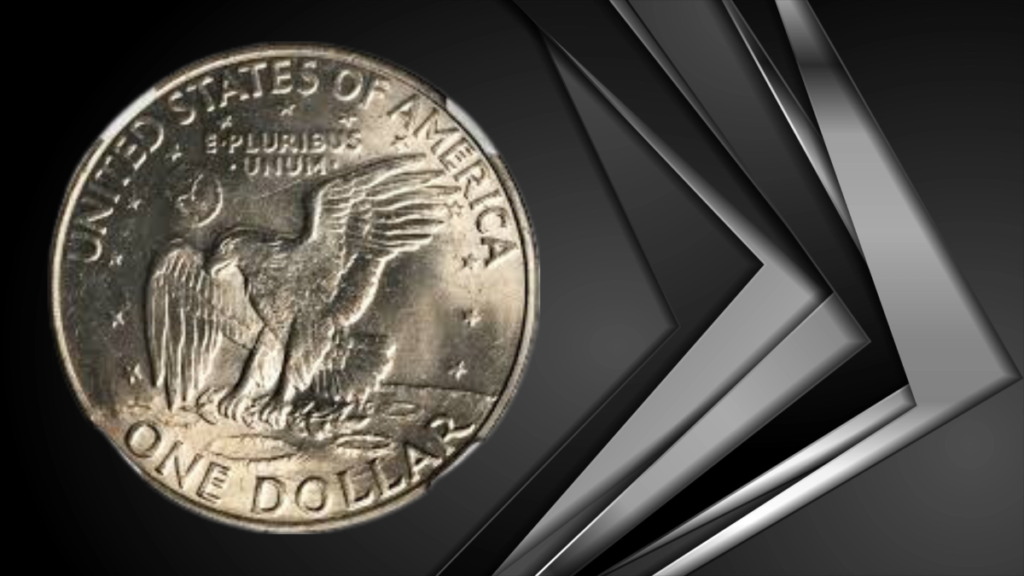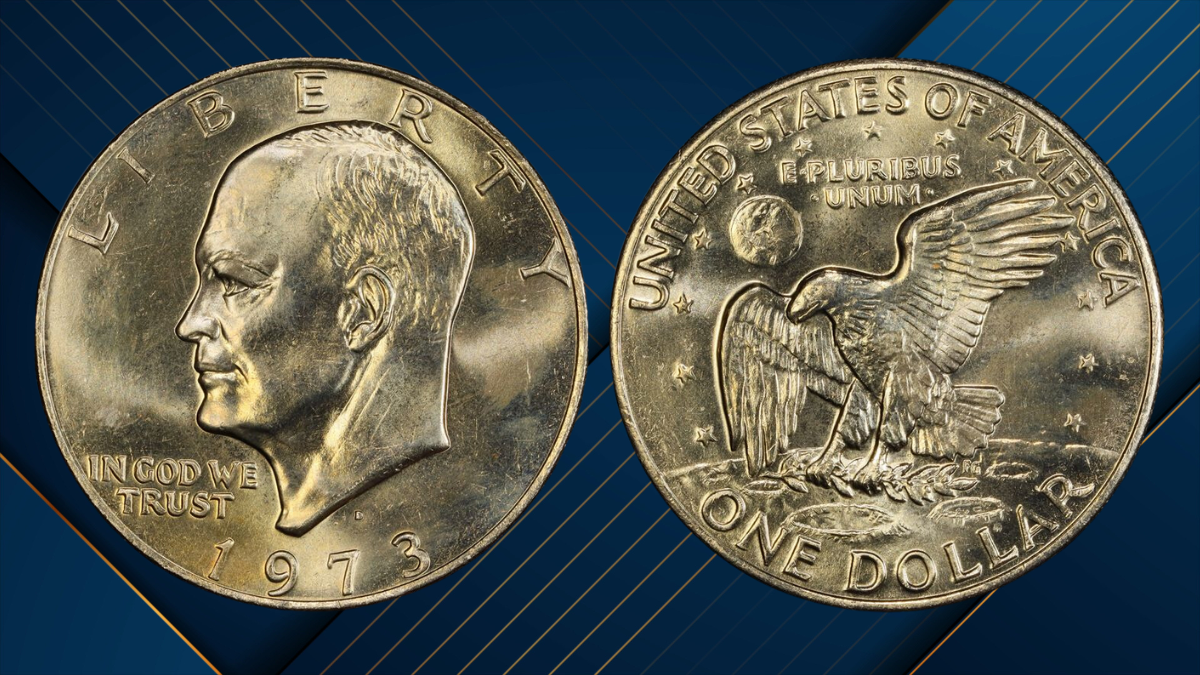The 1972 Eisenhower Dollar is a special part of U.S. coin history. Introduced in 1971, this large coin was created to honor President Dwight D. Eisenhower, who passed away in 1969.
The coin’s creation was made possible through the Bank Holding Company Act Amendments of 1970, signed into law by President Richard Nixon, Eisenhower’s former Vice President.
Despite its significance, the production of the Eisenhower Dollar wasn’t without its challenges. The U.S. Mint faced issues with the design, especially in striking such a large coin with the copper-nickel (Cu-Ni) composition, the same material used for dimes and quarters since 1965.
This led to several design changes over the first two years of production. By 1972, three distinct varieties of the Eisenhower Dollar emerged, known as Type 1, Type 2, and Type 3.
How to Identify the Three Varieties

The main way to distinguish between the three 1972 varieties is by examining the globe on the reverse side of the coin. Each variety shows a slightly different design of the earth and the Caribbean islands:
- Type 1: The islands appear less detailed and almost flat.
- Type 2: This is the rarest variety, where the islands appear incuse (sunken into the coin).
- Type 3: Features a more refined, detailed design, making it distinct from the Type 1 and Type 2.
While Type 2 is highly sought after by collectors due to its scarcity, all three types, especially in high grades, are considered rare. Coins above MS65 are particularly difficult to find.
Top 19 Rare Coins You’ll Want in Your Collection
The Value of the 1972 Eisenhower Dollar

Although millions of Eisenhower Dollars were minted in 1972, those in Mint State condition (uncirculated) are harder to come by, especially for the Type 2 variety.
This scarcity is partly due to the absence of Eisenhower Dollars in the 1971 and 1972 Mint Sets, meaning fewer coins were preserved in pristine condition.
In the market, the value of these coins can vary. Type 1 and Type 3 coins typically sell for $5 to $10 in raw, ungraded condition.
However, Type 2 coins, especially those certified by professional grading services, can fetch prices ranging from $80 to $100 or more. Coins graded by services like PCGS or NGC, particularly in higher grades like MS65 or MS66, are even more valuable, often commanding hundreds or thousands of dollars at auction.
Forgotten Gold: 14 Valuable Coins You Might Be Holding Right Now!
Why Grading Matters
Professional grading plays a significant role in determining the value of the 1972 Eisenhower Dollar. Coins that have been authenticated and graded by top services such as PCGS, NGC, and CAC tend to fetch higher prices. Graded coins not only assure collectors of the coin’s authenticity but also provide a standardized assessment of its condition.
For example, a PCGS MS66+ Type 2 Eisenhower Dollar can sell for upwards of $12,000, depending on its eye appeal and rarity. Grading services like CAC further enhance a coin’s desirability, as their certification adds another layer of trust and value to the coin.
Conclusion
The 1972 Eisenhower Dollar is an intriguing piece of American numismatic history. With three distinct varieties, each offering its own challenges and rewards for collectors, this coin remains popular in the collecting community.
Whether you’re hunting for a rare Type 2 or simply looking to add a high-quality specimen to your collection, understanding the nuances of the 1972 Eisenhower Dollar is key to making informed buying decisions.

